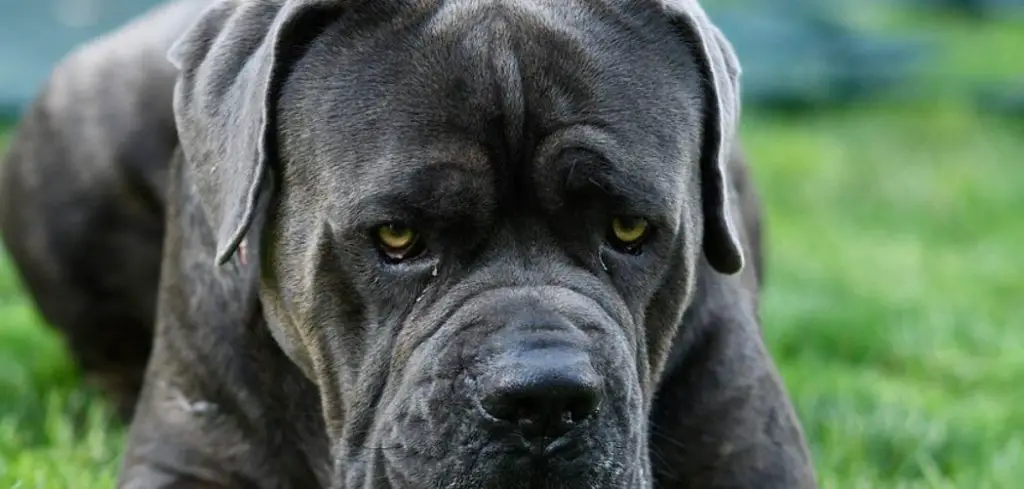Seeing your dog eating grass and pooping blood is not only alarming—it’s downright terrifying.
While grass-eating might seem like a harmless quirk, the appearance of blood in your dog’s stool signals that something more serious may be going on.
We outline why dogs eat grass, what it means when it’s followed by bloody stool, and what you should do next.
Table of Contents
Dog Eating Grass and Pooping Blood: Here’s Why It Happens
A dog eating grass and pooping blood is a sign of gastrointestinal irritation, parasites, or a more serious condition like hemorrhagic gastroenteritis or inflammatory bowel disease.
While grass-eating is common in dogs and often harmless, the presence of blood in the stool is not normal and indicates internal distress.
It can result from grass scratching the intestinal lining, ingesting toxins, or underlying infections.

Why Is My Dog Eating Grass and Pooping Blood?
1. Gastrointestinal Irritation or Inflammation
One of the most common reasons for bloody stools in dogs after eating grass is irritation of the gastrointestinal (GI) tract.
When your dog consumes too much grass, it can scratch the lining of the stomach or intestines, leading to small tears that cause blood in the stool. This is more likely if the grass is coarse or if your dog eats a large amount in a short time.
Moreover, if the grass has been treated with pesticides or fertilizers, it could result in chemical irritation, further inflaming the digestive tract.
Related: Dog eating grass and licking paws (Explained)
2. Parasites
Internal parasites like hookworms or whipworms can damage the lining of the intestines, causing bloody diarrhea or blood-tinged poop. A dog might eat grass to try to relieve abdominal discomfort caused by the worms.
If your dog is eating grass and pooping blood frequently, a stool test from the vet can confirm the presence of parasites.
3. Hemorrhagic Gastroenteritis (HGE)
Hemorrhagic Gastroenteritis is a serious condition characterized by sudden vomiting and bloody diarrhea in dogs. While the exact cause of HGE is unknown, it can be triggered by dietary indiscretion—like eating something unusual, such as large amounts of grass.
Dogs with HGE may also show:
Lethargy
Dehydration
Loss of appetite
HGE can be life-threatening and requires immediate veterinary attention.
4. Inflammatory Bowel Disease (IBD)
Dogs with inflammatory bowel disease often have chronic digestive issues. Symptoms include:
Eating grass frequently
Pooping blood or having mucus in stool
Weight loss
Vomiting
IBD causes inflammation of the intestines, which can lead to bleeding. If your dog consistently eats grass and has bloody stools, your vet may recommend tests like endoscopy or a biopsy.
5. Foreign Object Ingestion
Sometimes, dogs eat non-food items along with grass—like sticks, plastic, or cloth. These foreign objects can damage the intestinal lining, causing bleeding and resulting in bloody poop.
In such cases, your dog may also show signs like:
Straining to defecate
Abdominal pain
Vomiting
If your dog seems distressed and isn’t passing stool normally, it could be an emergency.
Related: Dog eating grass frantically (Explained)
Types of Blood in Dog Poop: What to Look For
Not all bloody dog poop looks the same. Recognizing the type of blood can help you and your vet identify where the issue is coming from.
1. Bright Red Blood (Hematochezia)
If your dog is pooping bright red blood, it usually means the bleeding is coming from the lower digestive tract—such as the colon or rectum. This may be caused by:
Anal gland issues
Rectal polyps
Parasites
Dietary irritation
This is the type most commonly seen after a dog eats grass and has mild GI upset.
2. Dark, Tarry Stool (Melena)
If the blood in your dog’s poop appears black or tarry, it suggests internal bleeding in the upper GI tract (like the stomach or small intestine). Melena can result from:
Ulcers
Tumors
Ingested toxins
Internal injury
This type of bleeding is more serious and needs prompt medical evaluation.
What Should I Do if My Dog Eats Grass and Poops Blood?
If your dog ate grass and is now pooping blood, here are the steps to follow:
1. Monitor for Additional Symptoms
Note any other symptoms such as:
Vomiting
Lethargy
Loss of appetite
Straining during bowel movements
Dehydration
The more details you can provide your vet, the better.
2. Don’t Ignore Bloody Stool
Even if your dog seems otherwise fine, pooping blood is never normal. Don’t chalk it up to a one-time fluke. Blood in dog poop is a symptom, not a diagnosis—and it requires investigation.
3. Avoid Grass Access Temporarily
Limit your dog’s access to grassy areas until you’ve identified the root cause.
If you do allow them to go outside, supervise closely to prevent further grazing.
4. Visit the Veterinarian
Your vet may recommend:
Fecal tests (for parasites or infections)
Bloodwork (to check organ function)
X-rays or ultrasound (to rule out blockages or tumors)
Dietary trials (if food allergies or sensitivities are suspected)
The sooner you seek professional help, the better the outcome.
Can This Be Prevented?
While you can’t always prevent your dog from eating grass, you can reduce the risk of bloody stool by:
Feeding a balanced, high-fiber diet to prevent digestive discomfort.
Providing chew toys and enrichment to curb boredom or anxiety.
Regular deworming to keep parasites at bay.
Using pet-safe lawn treatments if you have a yard.
Monitoring for food allergies or intolerances that can cause GI inflammation.
When to Worry: Red Flags That Require Urgent Vet Care
If your dog is eating grass and pooping blood, see your vet as soon as possible.
But especially seek emergency help if:
The bloody stool is accompanied by vomiting or collapse
Your dog appears very weak, dehydrated, or unresponsive
You see black, tar-like stool indicating internal bleeding
Your dog refuses to eat or drink for more than 24 hours
The blood in the stool increases or persists for more than a day
Key Takeaway
It’s easy to dismiss grass-eating as “just something dogs do,” but when it’s followed by pooping blood, you need to take it seriously.
Whether it’s a mild digestive irritation or something more serious like HGE or IBD, early action can make all the difference.
Your dog can’t tell you what’s wrong—but their behaviors and symptoms, like eating grass and passing bloody stool, are their way of asking for help.
Listen closely, act quickly, and always consult your vet when something seems off.
